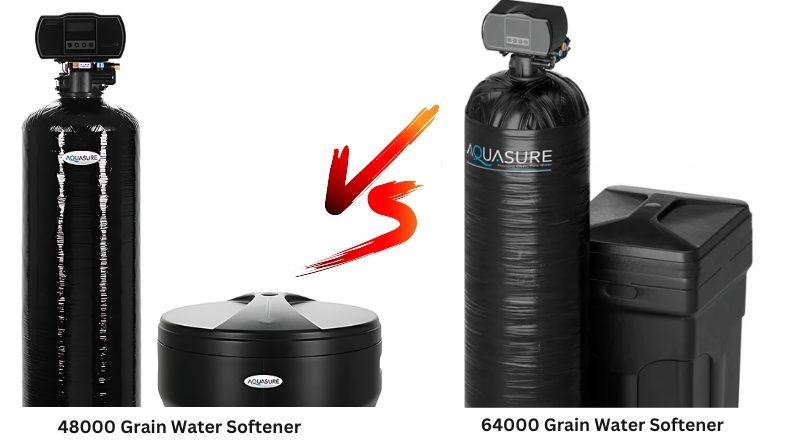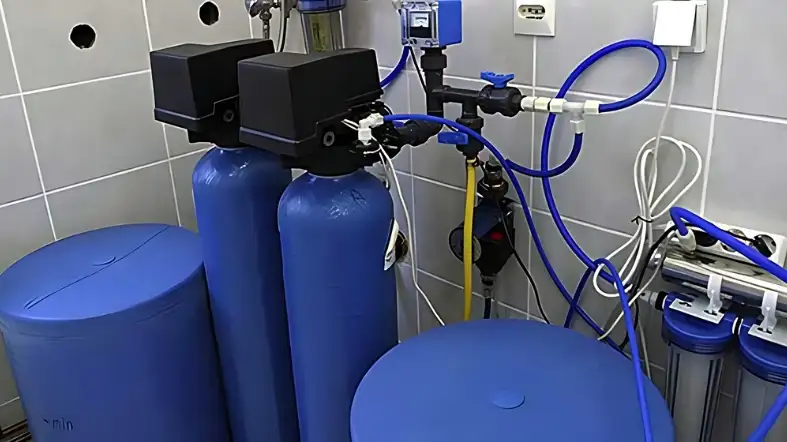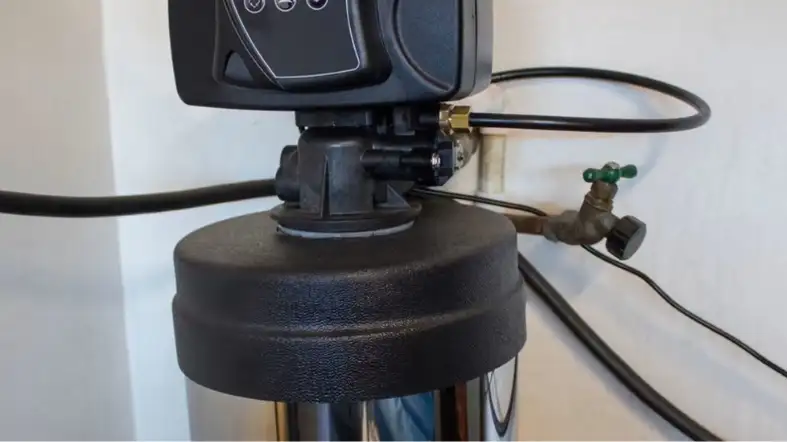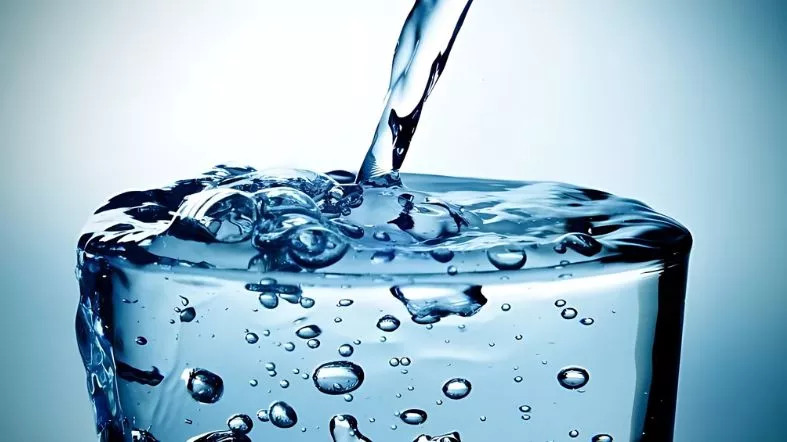Welcome to a detailed comparison that’s about to unravel the mysteries behind water softeners with grain capacities of 48000 and 64000.
If you’ve ever wondered about the differences between these two sizes, from price to installation, from maintenance to efficiency, you’re in for a treat.
Dive into this comprehensive guide to discover which one suits your needs, your household, and your environmental considerations.

Quick Comparison
| Criterion | 48000 Grain Water Softener | 64000 Grain Water Softener |
|---|---|---|
| Price | Cheaper upfront and in operating costs | More expensive upfront and in operating costs |
| Size | Smaller and lighter | Larger and heavier |
| Installation | Easier and less plumbing work | Harder and more plumbing work |
| Maintenance | Less demanding and less salt and water consumption | More demanding and more salt and water consumption |
| Regeneration Frequency | Higher and more consistent soft water supply | Lower and more salt and water saving |
| Softening Capacity | Lower and matches lower daily water usage | Higher and matches higher daily water usage |
| Water Quality | Higher sodium levels and lower pressure | Lower sodium levels and higher pressure |
| Efficiency | Lower and wastes some capacity if not used enough | Higher and optimizes the use of capacity if used enough |
| Suitability | Suitable for smaller households or lower water hardness or water usage | Suitable for larger households or higher water hardness or water usage |
48000 vs 64000 Grain Water Softener: A Detailed Comparison
In this comparison, we will look at two common grain capacities for water softeners: 48000 and 64000. We will compare them based on the following criteria:
- Price
- Size
- Installation
- Maintenance
- Salt and Water Usage
- Regeneration Frequency
- Softening Capacity
- Water Quality
- Efficiency
- Suitability
Price
The price of a water softener depends on various factors, such as the brand, model, features, warranty, etc.
However, in general, the higher the grain capacity, the higher the price. A 48000 grain water softener is usually cheaper than a 64000 grain water softener, both upfront and in terms of operating costs.
For example, this Fleck 5600SXT 48,000 Grain Water Softener from Amazon costs $759.00, while this Fleck 5600SXT 64,000 Grain Water Softener from Amazon costs $909.00.
Both models have similar features and ratings, but the 64000 grain one is $150 more expensive than the 48000 grain one (Price May Change When You Are Reading This Post).
The price difference may not seem significant at first glance, but it can add up over time.
A higher grain capacity also means higher salt and water consumption, which translates into higher operating costs.
According to HomeAdvisor, a 48000 grain water softener costs about $133 per year to operate, while a 64000 grain water softener costs about $177 per year to operate.
Therefore, if you are looking for a more affordable option, a 48000 grain water softener may be a better choice than a 64000 grain water softener.
Size
The size of a water softener is another factor to consider when choosing a grain capacity.
The size of a water softener depends on its resin volume, which is the amount of resin beads that hold the hard minerals from the water. The higher the resin volume, the larger the size of the water softener.
A 48000 grain water softener typically has a resin volume of 1.5 cubic feet, while a 64000 grain water softener typically has a resin volume of 2 cubic feet.
This means that a 64000 grain water softener is bigger than a 48000 grain water softener by about one-third.
The size of a water softener affects how much space it takes up in your home and how easy it is to install and maintain.
A larger water softener may require more plumbing work to install and more space to accommodate. It may also be heavier and harder to move around.
Therefore, if you have limited space or prefer a more compact option, a 48000 grain water softener may be a better choice than a 64000 grain water softener.
Installation

The installation of a water softener involves connecting it to your main water supply line, your drain line, and your power outlet.
The installation process may vary depending on the type and model of your water softener, but generally it requires some basic plumbing skills and tools.
A 48000 grain water softener and a 64000 grain water softener have similar installation requirements, as they both use standard connections and fittings.
However, as mentioned earlier, a 64000 grain water softener is larger and heavier than a 48000 grain water softener, which may make it more difficult to install.
A larger water softener may require more pipes and valves to connect to your existing plumbing system.
It may also require more space to fit in your desired location. It may also be harder to lift and maneuver around tight spaces or stairs.
Therefore, if you want an easier installation process or have limited access to your plumbing system, a 48000 grain water softener may be a better choice than a 64000 grain water softener.
Maintenance
The maintenance of a water softener involves checking and replenishing the salt level, cleaning and sanitizing the resin bed, and replacing the filters and parts as needed.
The maintenance frequency and difficulty may vary depending on the type and model of your water softener, but generally it requires some basic knowledge and care.
A 48000 grain water softener and a 64000 grain water softener have similar maintenance requirements, as they both use salt-based ion exchange technology and have similar components.
However, as mentioned earlier, a 64000 grain water softener consumes more salt and water than a 48000 grain water softener, which may make it more demanding to maintain.
A higher salt and water consumption means that you need to refill the salt tank more often and flush out the resin bed more frequently.
It also means that you need to monitor the salt level and the water quality more closely to prevent problems such as salt bridging, resin fouling, or bacterial growth.
Therefore, if you want a less demanding maintenance routine or have limited time or resources to maintain your water softener, a 48000 grain water softener may be a better choice than a 64000 grain water softener.
Salt and Water Usage
The salt and water usage of a water softener is the amount of salt and water that it consumes to regenerate its resin bed and restore its softening capacity.
The salt and water usage affects the operating costs, the environmental impact, and the water quality of your water softener.
A 48000 grain water softener uses less salt and water than a 64000 grain water softener, as it has a lower resin volume and a lower regeneration frequency.
According to this Water Tech Advice, a 48000 grain water softener uses about 9.6 pounds of salt and 64 gallons of water per regeneration, while a 64000 grain water softener uses about 12.8 pounds of salt and 85 gallons of water per regeneration.
The difference in salt and water usage may not seem significant per regeneration, but it can add up over time.
A higher salt and water consumption means higher operating costs, as you need to buy more salt and pay more for your water bill.
It also means higher environmental impact, as you contribute more to the salt pollution and the water scarcity issues.
It also means lower water quality, as you may experience higher sodium levels or lower pressure in your softened water.
Therefore, if you want to save money, protect the environment, or improve your water quality, a 48000 grain water softener may be a better choice than a 64000 grain water softener.
Regeneration Frequency

The regeneration frequency of a water softener is how often it needs to regenerate its resin bed and restore its softening capacity.
The regeneration frequency depends on the grain capacity, the daily softening requirement, and the regeneration setting of your water softener.
A 48000 grain water softener regenerates more frequently than a 64000 grain water softener, as it has a lower grain capacity and a lower softening capacity.
If your daily softening requirement is 5000 grains per day, a 48000 grain water softener will regenerate every 7.2 days (assuming a 75% efficiency setting), while a 64000 grain water softener will regenerate every 9.6 days (assuming a 75% efficiency setting).
The difference in regeneration frequency may have some advantages and disadvantages.
A higher regeneration frequency means that your water softener always has enough capacity to meet your daily needs, and that your resin bed stays clean and fresh.
However, it also means that your water softener consumes more salt and water, and that you may experience more interruptions in your water supply during the regeneration process.
A lower regeneration frequency means that your water softener consumes less salt and water, and that you have fewer interruptions in your water supply.
However, it also means that your water softener may run out of capacity before it regenerates, and that your resin bed may accumulate more dirt and bacteria.
Therefore, if you want to balance the regeneration frequency with the salt and water usage, the water quality, and the convenience, you may need to adjust the regeneration setting of your water softener according to your preference.
Most water softeners allow you to choose between a time-based or a demand-based regeneration setting.
A time-based setting regenerates the water softener at a fixed interval, such as every 7 days.
A demand-based setting regenerates the water softener based on the actual water usage, such as when the remaining capacity reaches a certain percentage.
Softening Capacity
The softening capacity of a water softener is the amount of water that it can soften before it needs to regenerate.
The softening capacity depends on the grain capacity, the water hardness level, and the regeneration setting of your water softener.
A 48000 grain water softener has a lower softening capacity than a 64000 grain water softener, as it has a lower grain capacity and a lower resin volume.
If your water hardness level is 15 gpg and your regeneration setting is 75% efficiency, a 48000 grain water softener can soften up to 1440 gallons of water per cycle, while a 64000 grain water softener can soften up to 1920 gallons of water per cycle.
The difference in softening capacity may affect how much water you can use before your water softener runs out of capacity and needs to regenerate.
A higher softening capacity means that you can use more water without worrying about hard water coming out of your faucets.
However, it also means that you may waste some of the unused capacity if you don’t use enough water before the next regeneration.
A lower softening capacity means that you can use less water before your water softener runs out of capacity and needs to regenerate.
However, it also means that you may optimize the use of the available capacity if you use enough water before the next regeneration.
Therefore, if you want to match the softening capacity with your daily water usage, you may need to calculate your daily softening requirement and compare it with the softening capacity of your water softener.
Your daily softening requirement is the amount of grains of hardness that your water softener needs to remove from the water every day.
You can calculate it by multiplying your water hardness level by your daily water usage.
For example, if your water hardness level is 15 gpg and your daily water usage is 100 gallons, your daily softening requirement is:
15 x 100 = 1500 grains per day
Your softening capacity is the amount of grains of hardness that your water softener can remove from the water per cycle.
You can calculate it by multiplying your grain capacity by your regeneration setting.
For example, if your grain capacity is 48000 grains and your regeneration setting is 75% efficiency, your softening capacity is:
48000 x 0.75 = 36000 grains per cycle
To compare your daily softening requirement with your softening capacity, you need to divide your softening capacity by your daily softening requirement.
This will give you the number of days that you can use before your
How to Find Out Your Water Hardness Level?
There are three ways to find out your water hardness level: using a test kit, contacting your local water supplier, or checking the average water hardness in your area.
Using a Test Kit
A test kit is a simple and inexpensive way to measure your water hardness at home.
You can buy a test kit online or at a hardware store, and follow the instructions to get a reading of your water hardness in grains per gallon (gpg).
A test kit usually consists of a strip or a vial that changes color when exposed to hard water.
The color indicates the degree of hardness, which you can compare with a chart provided with the kit.
For example, this [Health Metric Water Test Kit] from Amazon can test your water hardness in seconds.
It comes with 50 strips that can measure the water hardness from 0 to 425 ppm (parts per million), which is equivalent to 0 to 25 gpg.
The strips have four color indicators that correspond to different ranges of hardness: green (soft), yellow (slightly hard), orange (moderately hard), and red (hard or very hard).
To use this test kit, you simply need to dip a strip into a sample of your water for about 3 seconds, then take it out and wait for 15 seconds.
The strip will change color according to the hardness level of your water. You can then match the color with the chart on the bottle and read the corresponding hardness value in ppm or gpg.
Contacting Your Local Water Supplier
Contacting your local water supplier is another option to find out your water hardness level.
You can call or visit their website and ask for a water quality report, which should include the information about the water hardness in your area.
However, this method may not be very accurate, as the water hardness may vary depending on the source, treatment, and distribution of the water.
For example, if you live in New York City, you can check this Water Quality Report from the NYC Department of Environmental Protection.
The report shows that the average water hardness in NYC is 14 ppm (0.8 gpg), which is considered soft.
However, the report also notes that the water hardness may vary from 9 ppm (0.5 gpg) to 19 ppm (1.1 gpg) depending on where you live in the city.
Checking the Average Water Hardness in Your Area
Checking the average water hardness in your area is a quick and easy way to get an estimate of your water hardness level.
You can use this map from the US Geological Survey (USGS), which shows the distribution of water hardness across the United States.
The map is based on data from more than 20,000 locations, and classifies the water hardness into four categories: soft (0 to 60 mg/L), moderately hard (61 to 120 mg/L), hard (121 to 180 mg/L), and very hard (more than 180 mg/L).
To convert these values into grains per gallon, you need to divide them by 17.1. For example, 180 mg/L is equivalent to 10.5 gpg.
To use this map, you simply need to zoom in on your state and county, and look for the color that represents the average water hardness in your area. The map also provides a legend that shows the range of values for each color category.
For example, if you live in Los Angeles County, California, you can see that most of the area is covered by light blue color, which means that the average water hardness is soft (0 to 60 mg/L or 0 to 3.5 gpg).
However, some parts of the county are covered by dark blue color, which means that the average water hardness is moderately hard (61 to 120 mg/L or 3.6 to 7 gpg).
How to Estimate Your Daily Water Usage?

Your daily water usage is the amount of water that you and your family consume every day for various purposes, such as showering, flushing, washing dishes, laundry, gardening, etc.
Your daily water usage affects how much water your water softener needs to soften, and how often it needs to regenerate.
There are three ways to estimate your daily water usage: multiplying the number of people in your household by the average gallons of water used per person per day, using a calculator, or checking your water meter or your water bill.
Multiplying the Number of People in Your Household by the Average Gallons of Water Used Per Person Per Day
Multiplying the number of people in your household by the average gallons of water used per person per day is a simple and convenient way to estimate your daily water usage.
According to the US Environmental Protection Agency (EPA), the average American uses about 88 gallons of water per day. However, this number may vary depending on your lifestyle and habits.
To use this method, you simply need to multiply the number of people in your household by 88, or by a different number that reflects your actual water consumption.
For example, if you have a family of four and you use about 100 gallons of water per person per day, your daily water usage is:
4 x 100 = 400 gallons per day
Checking Your Water Meter or Your Water Bill
Checking your water meter or your water bill is another way to find out how much water you use in a given period of time.
A water meter is a device that measures the amount of water that flows through your pipes.
You can find your water meter in your basement, garage, or outside your house.
To read your water meter, you need to note down the numbers on the dial or display, which indicate how many cubic feet or gallons of water have passed through the meter.
To calculate your daily water usage, you need to subtract the previous reading from the current reading, and divide by the number of days between the readings.
Your water bill is another source of information about your water usage.
Your water bill should show how many gallons or cubic feet of water you have used in a billing cycle, which is usually a month or a quarter.
To calculate your daily water usage, you need to divide the total amount of water by the number of days in the billing cycle.
For example, if you check your water meter and find that it reads 123456 on January 1st and 124567 on January 31st, your monthly water usage is:
124567 – 123456 = 1111 cubic feet
To convert to cubic feet to gallons, you need to multiply by 7.48. So, your monthly water usage in gallons is:
1111 x 7.48 = 8313.48 gallons
To calculate your daily water usage, you need to divide by the number of days in the month. Since January has 31 days, your daily water usage in gallons is:
8313.48 / 31 = 268.15 gallons per day
If you check your water bill and find that it shows that you have used 2500 gallons of water in the month of February, your daily water usage in gallons is:
2500 / 28 = 89.29 gallons per day
Using a Calculator
Using a calculator is a more accurate and detailed way to estimate your daily water usage.
A calculator allows you to enter various factors that affect your water consumption, such as showering, flushing, washing dishes, laundry, gardening, etc. The calculator will give you an estimate of how many gallons of water you use per day, per week, per month, and per year.
For example, this [Water Use Calculator] can help you calculate your daily water usage based on your specific habits and activities.
The calculator has several tabs that cover different categories of water use, such as indoor, outdoor, leaks, etc.
You can fill in the blanks with the information that applies to you, such as the number of showers you take per day, the duration and flow rate of your showerhead, the number of times you flush your toilet, the capacity and efficiency of your washing machine and dishwasher, etc.
The calculator will then show you how much water you use for each category and in total.
For example, if you use this calculator and enter the following information:
- Indoor
- Showers: 2 times per day, 10 minutes each, 2.5 gallons per minute
- Baths: 0 times per day
- Toilets: 4 times per day, 1.6 gallons per flush
- Faucets: 10 minutes per day, 2 gallons per minute
- Clothes Washer: 3 loads per week, 40 gallons per load
- Dishwasher: 1 load per day, 6 gallons per load
- Outdoor
- Lawn Watering: 0 minutes per week
- Car Washing: 0 times per month
- Pool: No pool
- Leaks
- No leaks
The calculator will give you the following results:
- Indoor
- Showers: 50 gallons per day
- Baths: 0 gallons per day
- Toilets: 6.4 gallons per day
- Faucets: 20 gallons per day
- Clothes Washer: 17.1 gallons per day
- Dishwasher: 6 gallons per day
- Outdoor
- Lawn Watering: 0 gallons per day
- Car Washing: 0 gallons per day
- Pool: 0 gallons per day
- Leaks
- No leaks
- Total Water Use: 99.5 gallons per day
How to Calculate Your Daily Softening Requirement?
Once you have your water hardness level and your daily water usage, you can calculate your daily softening requirement by multiplying them together.
Your daily softening requirement is the amount of grains of hardness that your water softener needs to remove from the water every day.
To use this formula, you simply need to multiply your water hardness level in gpg by your daily water usage in gallons.
For example, if your water hardness level is 15 gpg and your daily water usage is 100 gallons, your daily softening requirement is:
15 x 100 = 1500 grains per day
This means that you need a water softener that can remove at least 1500 grains of hardness from the water every day.
Your daily softening requirement is an important factor to consider when choosing the grain capacity of your water softener.
The grain capacity of a water softener is the maximum amount of grains of hardness that it can remove from the water before it needs to regenerate.
The higher the grain capacity, the longer the water softener can operate between regenerations, and the more water it can soften.
FAQs
Is the 48000 grain water softener suitable for smaller households?
Can the 64000 grain softener be more efficient for larger families?
Does the 48000 grain softener require less space for installation?
Do both sizes contribute to improved water quality?
Are there any environmental benefits to choosing the 48000 grain softener?
Final Words
In the world of water softeners, choosing between 48000 and 64000 grain sizes is no small decision.
Now armed with insights into factors, maintenance, and FAQs, you’re equipped to make an informed choice that aligns with your needs and home.
Whether you’re aiming for efficiency, family size, or environmental considerations, your water softener decision just got easier.
